(5 min read) Probably my favorite “national museum” of all time, Amsterdam’s Rijksmuseum is expertly curated to combine both an “art museum” and a “history museum” into a seamless experience.
Overview
The Rijksmuseum originated in 1800 as the National Art Gallery in The Hague, before moving to Amsterdam in 1808. In 1805, after various temporary homes, Pierre Cuypers’ neo-Gothic and Renaissance revival masterpiece opened. The building itself became immediately controversial for its elaborate Catholic and medieval-inspired decorations in Protestant Holland, but I love its detail-heavy eclecticism.
The museum has a strategic location within Amsterdam’s urban fabric. Positioned at the head of beautiful Museumplein (Museum Park), it serves as a grand gateway between the historical canal ring and the 19th-century expansion of the city.
When approaching from the canal belt, visitors pass through the iconic bike passage (the Museumstraat) that bisects the building—a unique example of how Dutch urban planning prioritizes both cultural landmarks and practical cycling infrastructure.
A recent decade-long renovation (2003-2013) restored Cuypers’ original vision while modernizing the facilities and creating new public spaces, including the stunning glass-covered courtyards that now serve as light-filled atriums.
The centerpiece of the museum is the “Gallery of Honor,” which showcases the best of the museums extensive collection of Dutch Golden Age painting (see “Art in Detail” for a couple pieces from here).
To enter it you first pass through the Great Hall. This two-story entrance hall is adorned with intricate mosaic floors, stained glass windows depicting Dutch artists and craftsmen, and elaborate wall paintings that illustrate key moments in Dutch history.
This space serves as both a physical and symbolic gateway to Dutch cultural achievement, preparing visitors for the artistic treasures that await in the Gallery of Honor beyond. The Great Hall exemplifies Cuypers’ vision of the museum as a secular cathedral to Dutch national identity, where history, art, and architecture converge.

The main collection covers from 1100 to 1900 and is arranged in three loops of galleries on the ground, first and second floors.
Each gallery serves as a themed chapter in the Netherlands’ evolving story, creating a narrative journey that spirals through the country’s history. The ground floor begins with medieval religious art and artifacts, establishing the foundations of Dutch culture before the Reformation. The second floor showcases the 17th-century Golden Age when Dutch maritime trade, science, and art flourished simultaneously. The first floor continues the chronological progression through the 18th and 19th centuries.
What makes this arrangement exceptional is how each gallery integrates paintings with contemporary artifacts. A Dutch still life hangs near the actual glassware it depicts; naval battle scenes accompany intricate ship models (see “Art in Detail”); ornate furniture sits beneath portraits showing similar pieces in use. This contextualization brings both the art and history to life—you don’t just see Vermeer’s domestic scenes, you understand the household objects, navigational instruments, and porcelain trade that shaped the world his subjects inhabited.
This curatorial approach also extends to the Netherlands’ colonial history, particularly in the “Netherlands Overseas” galleries. Rather than segregating colonial artifacts into a separate ethnographic collection (as many European museums do), the Rijksmuseum incorporates them into the timeline of Dutch history, acknowledging the complex relationship between domestic and colonial developments. This integration offers a more complete—if still evolving—picture of Dutch national identity.

The Cuypers Library within the museum is a hidden architectural gem and the largest public art history research library in the Netherlands. With its spiral staircases, ornate cast-iron balconies, and over 450,000 volumes, it is a bibliophile’s dream.
Don’t Miss
There’s a collection of 20th century art here that is up on the top floor, and a bit funky to access. It would be easy to miss, but if you like Dutch modernism — and anyone into modernism should — make sure not to miss these galleries. (And pay a visit to the nearby Stedelijk.)
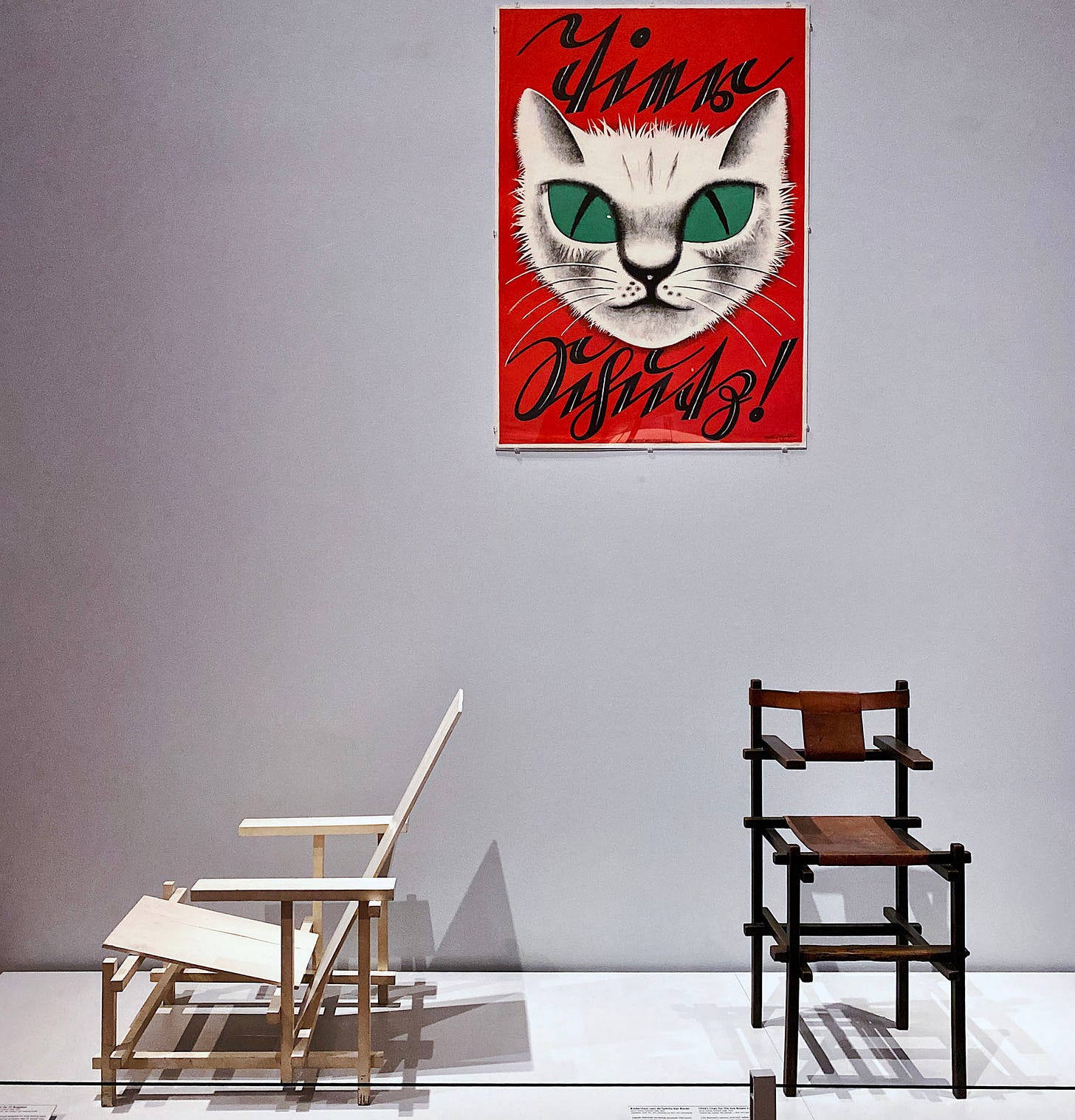
Art in Detail
For a detailed look at some of the pieces here I found particularly interesting or photogenic, check out these Substack Notes:
From the Gallery of Honor:
~
From the main galleries, in chronological order:
Practical Information
Where: Amsterdam, Netherlands
My Visits: 19-22 March & 3-4 April 2022
Best For: Anyone with an interest in Dutch history, the Dutch Golden Age, and medieval art from northern Europe.
Pro Tip: The Rijksmuseum is huge and worth multiple visits; membership cost about the price of three visits if I recall correctly and may be worth buying if you have an extended stay in Amsterdam — I was there for about three weeks and within walking distance, so I made six visits of about two hours each.
** Please like and/or restack this post if you enjoyed it; it helps others to find it! **


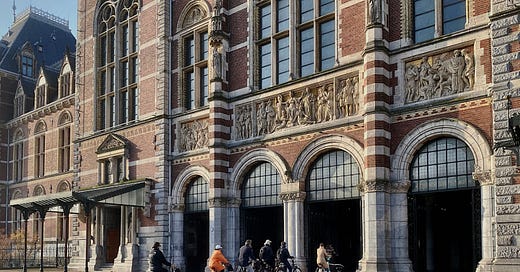


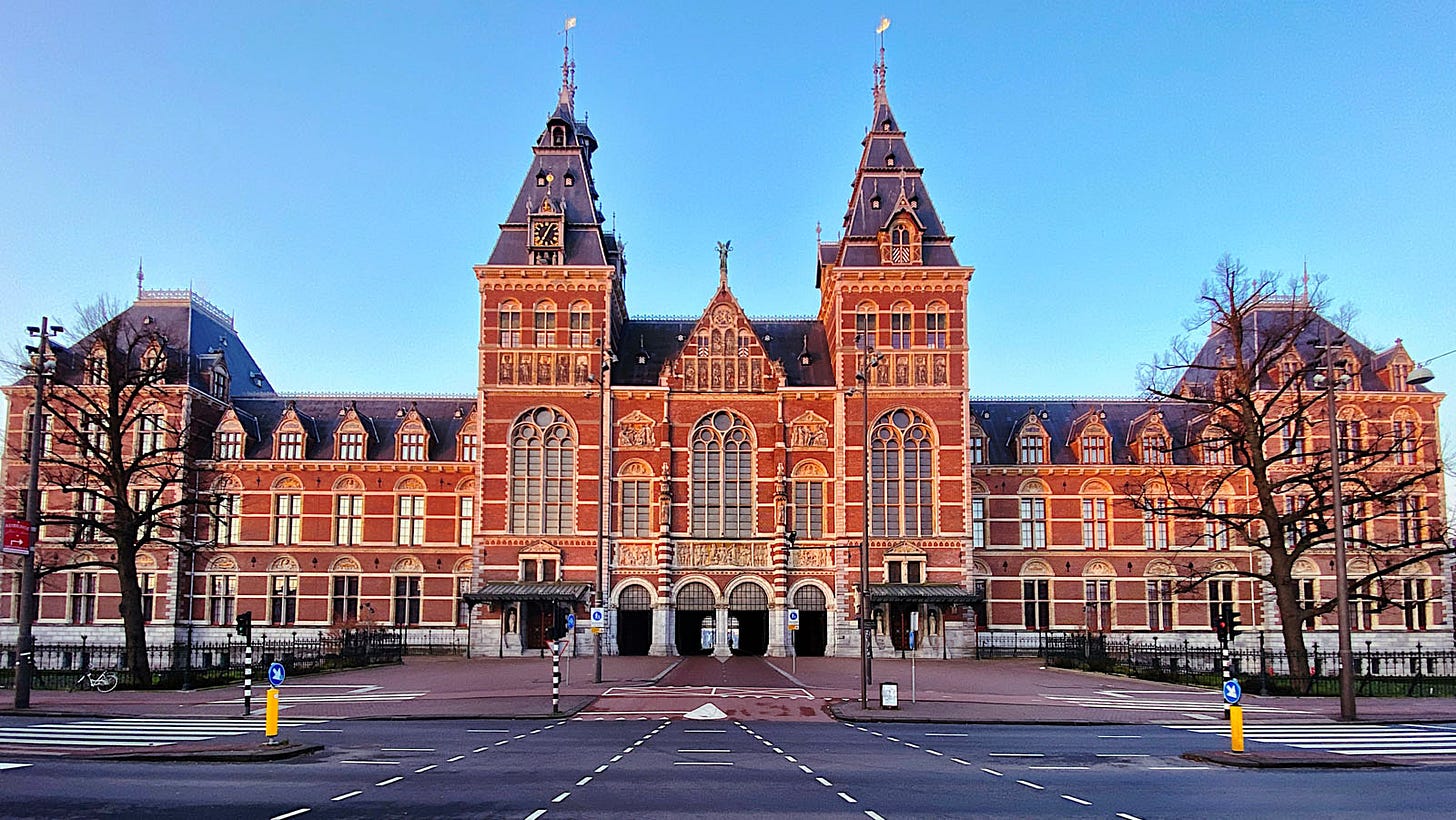
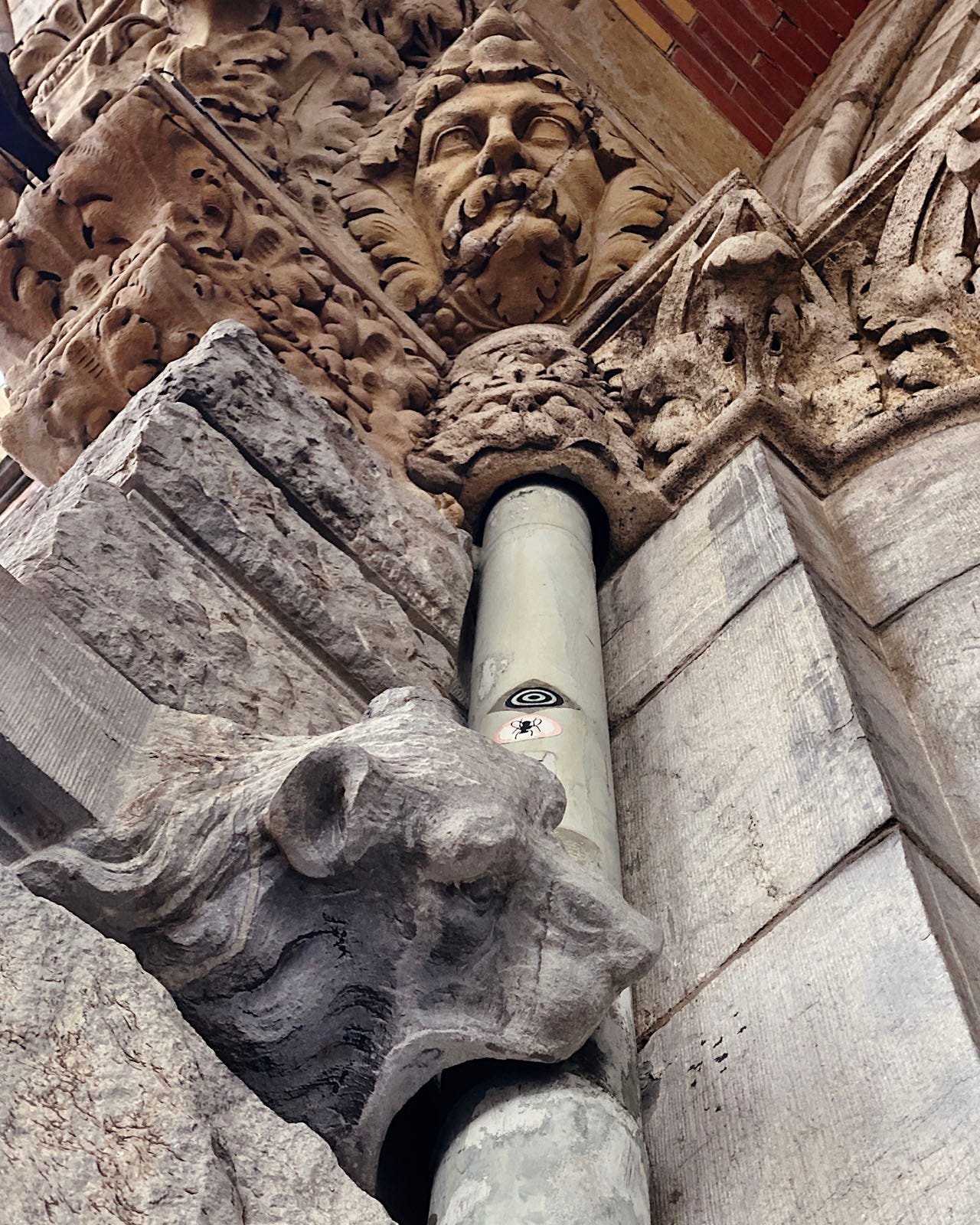
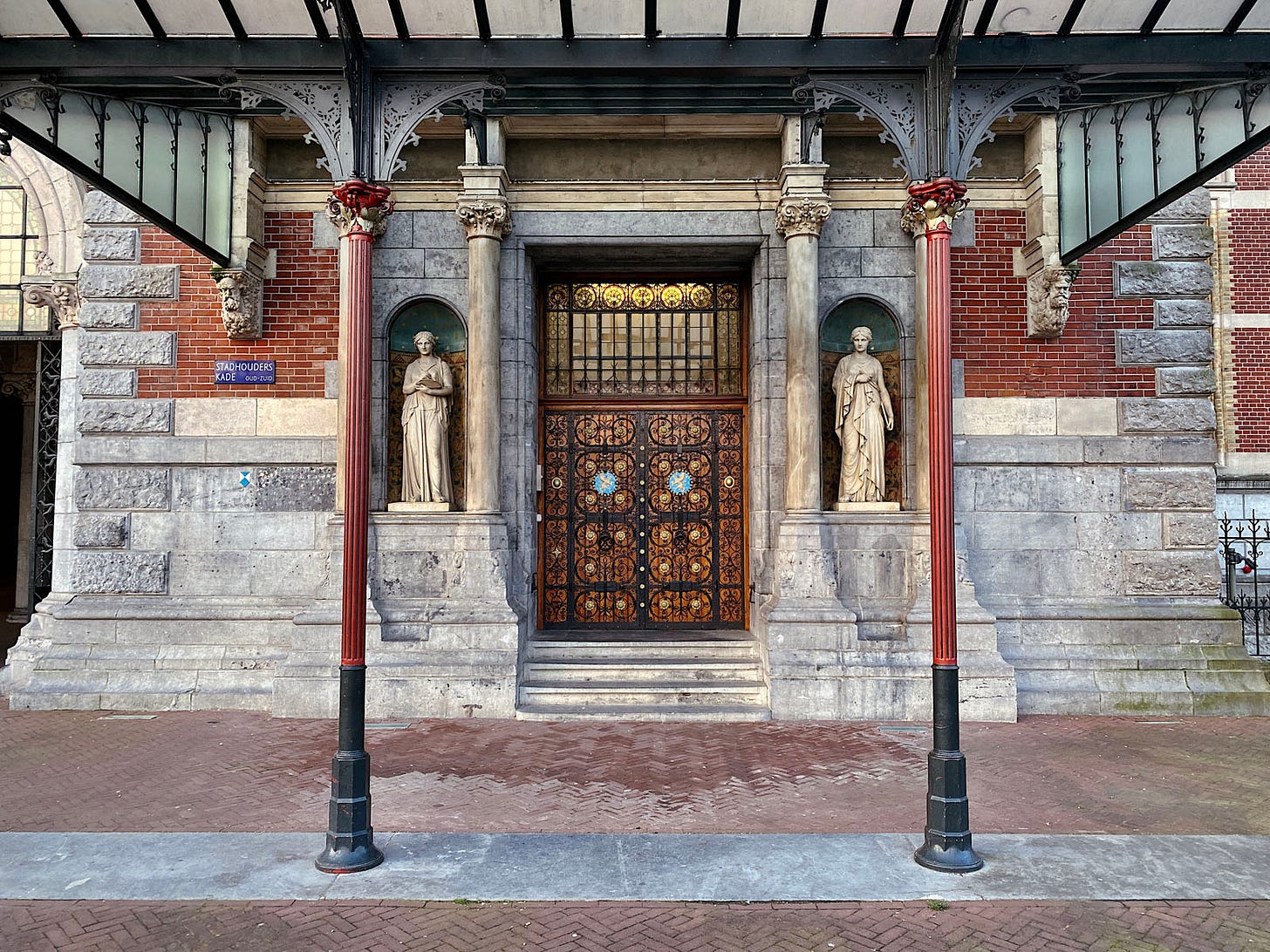

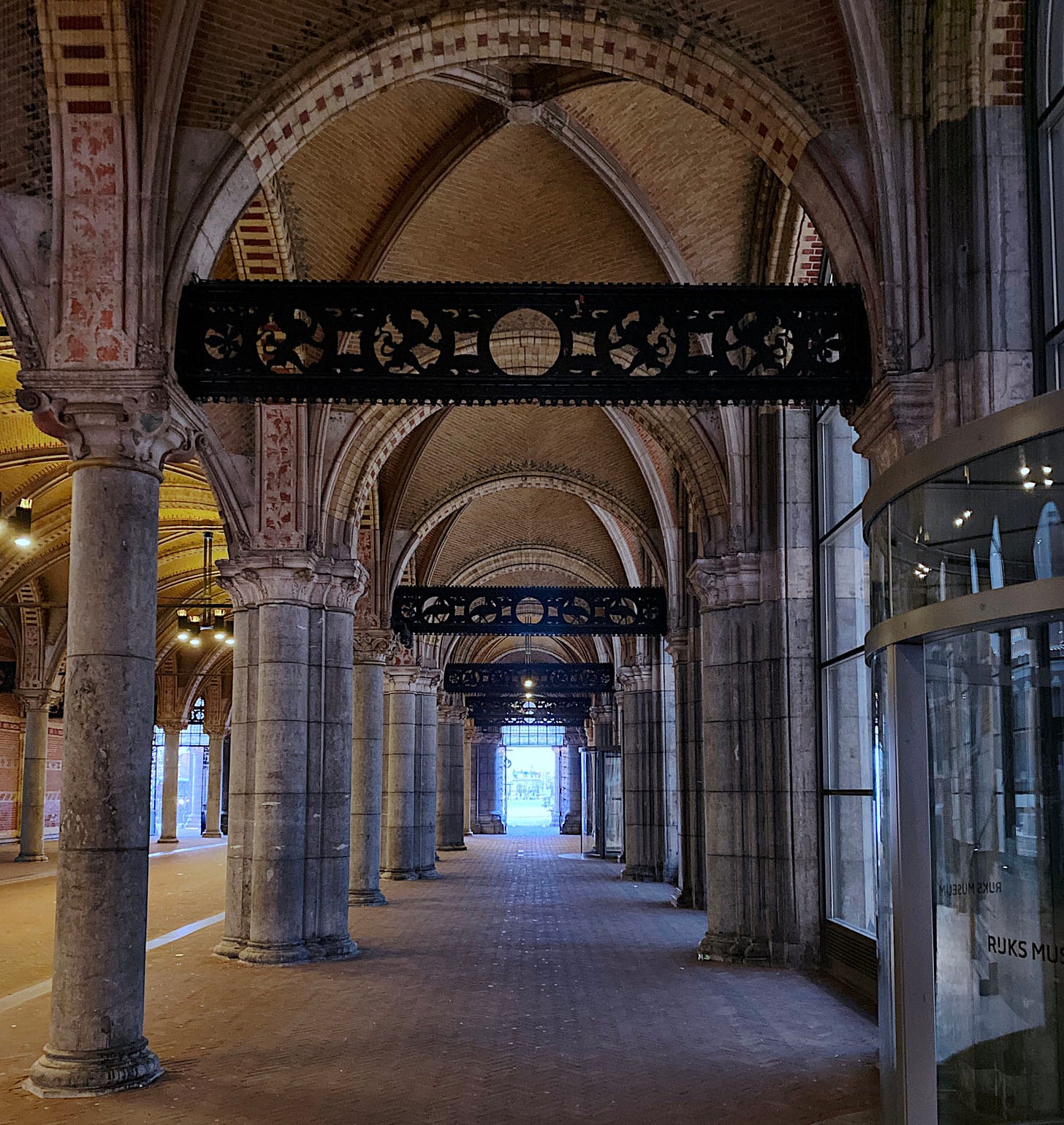
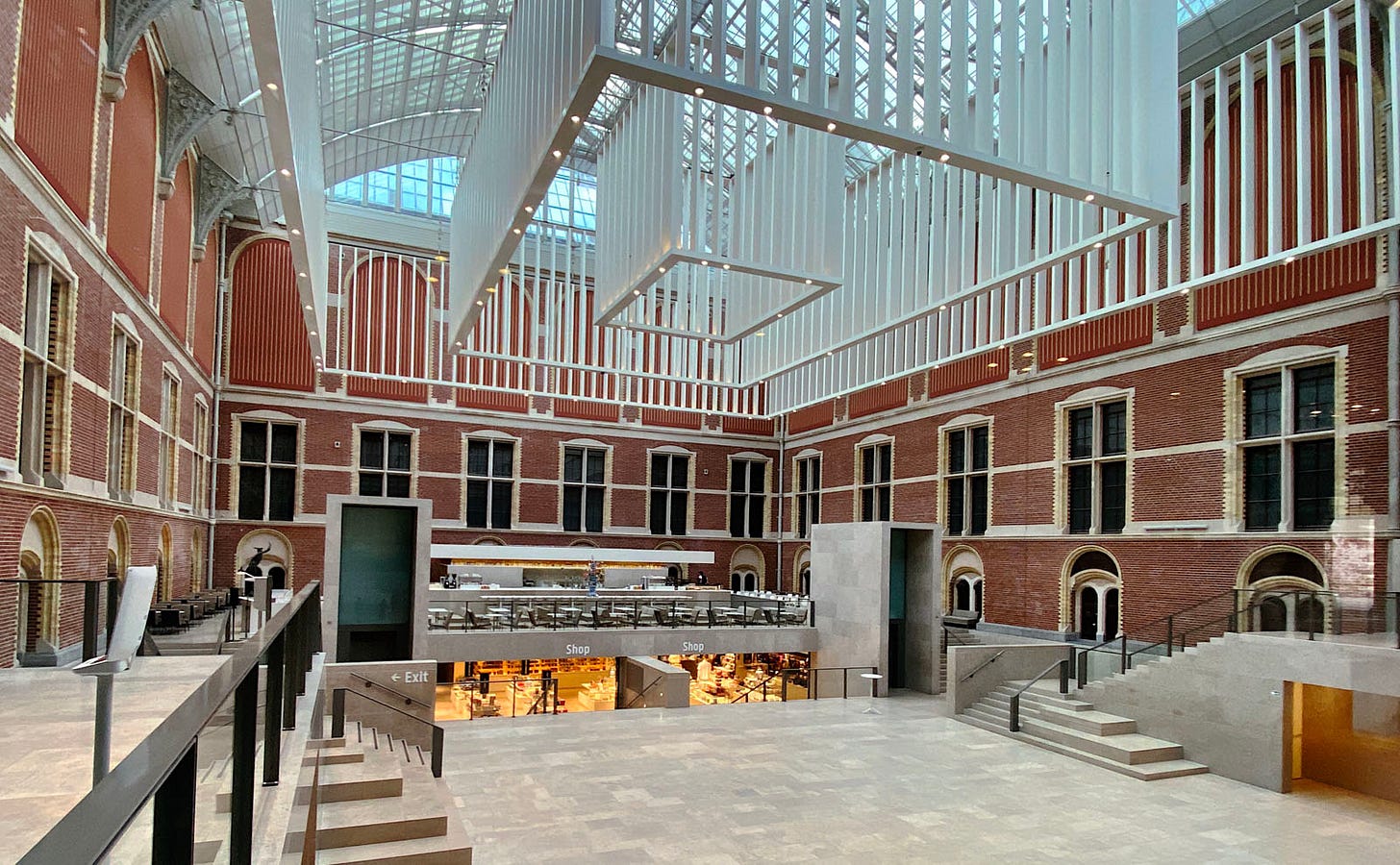
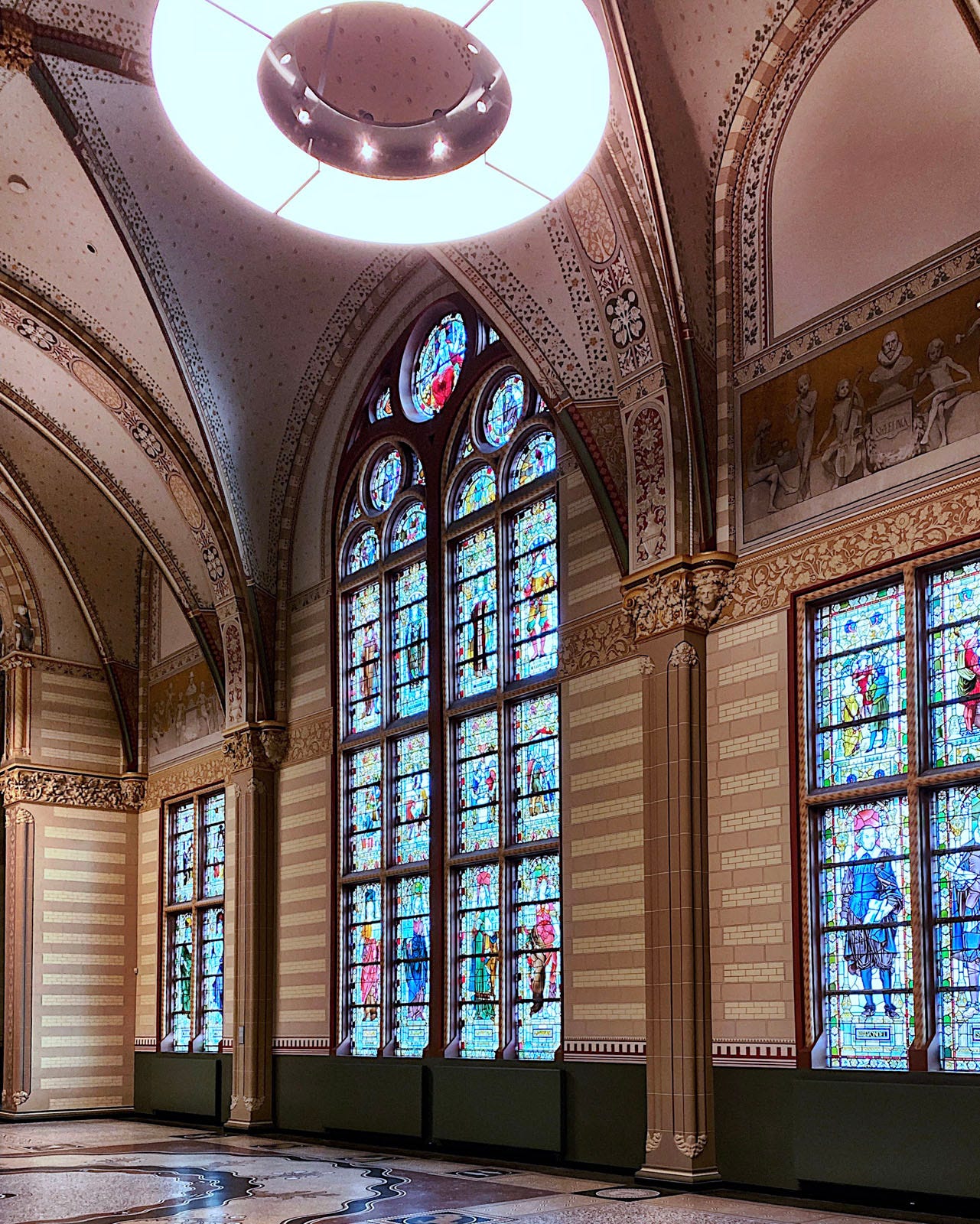
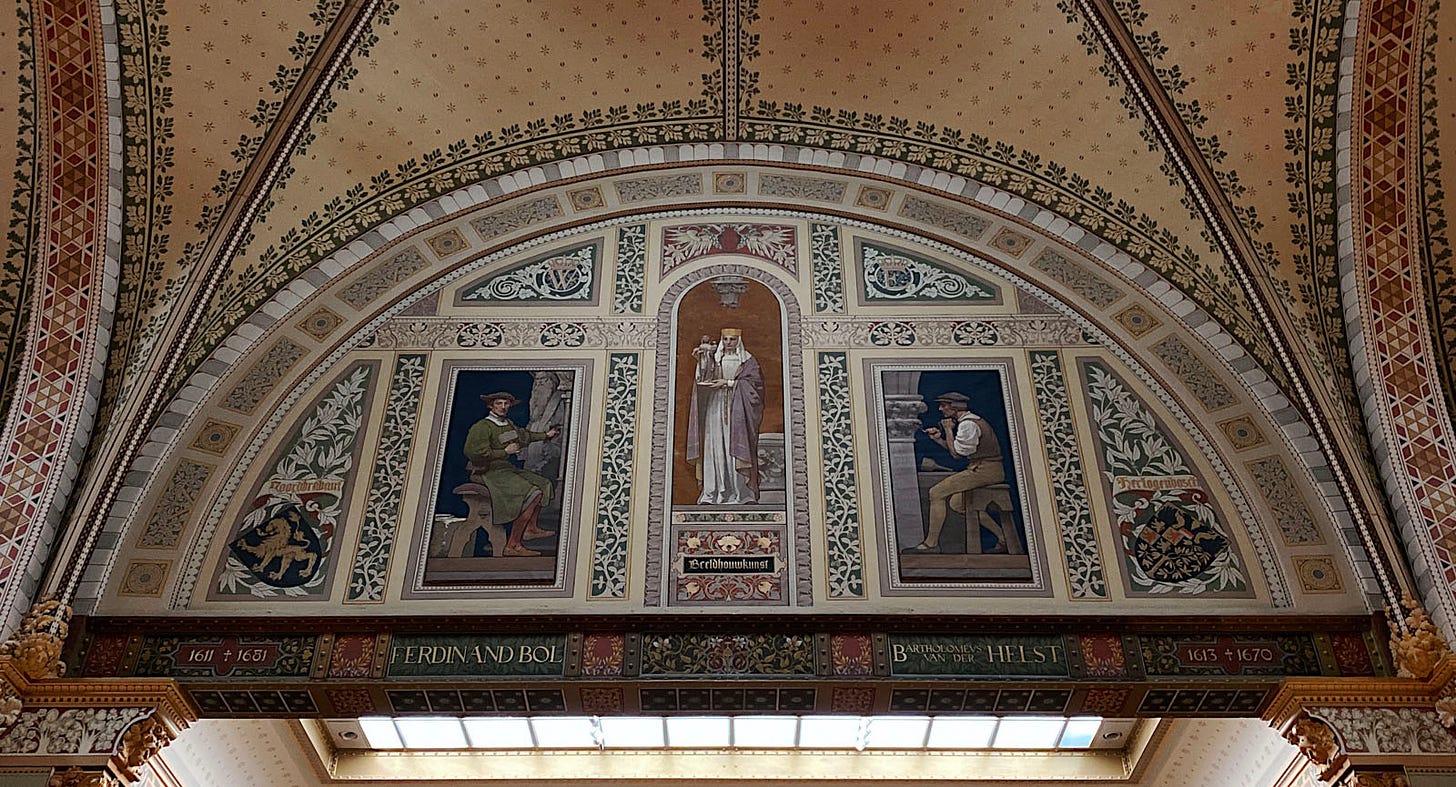
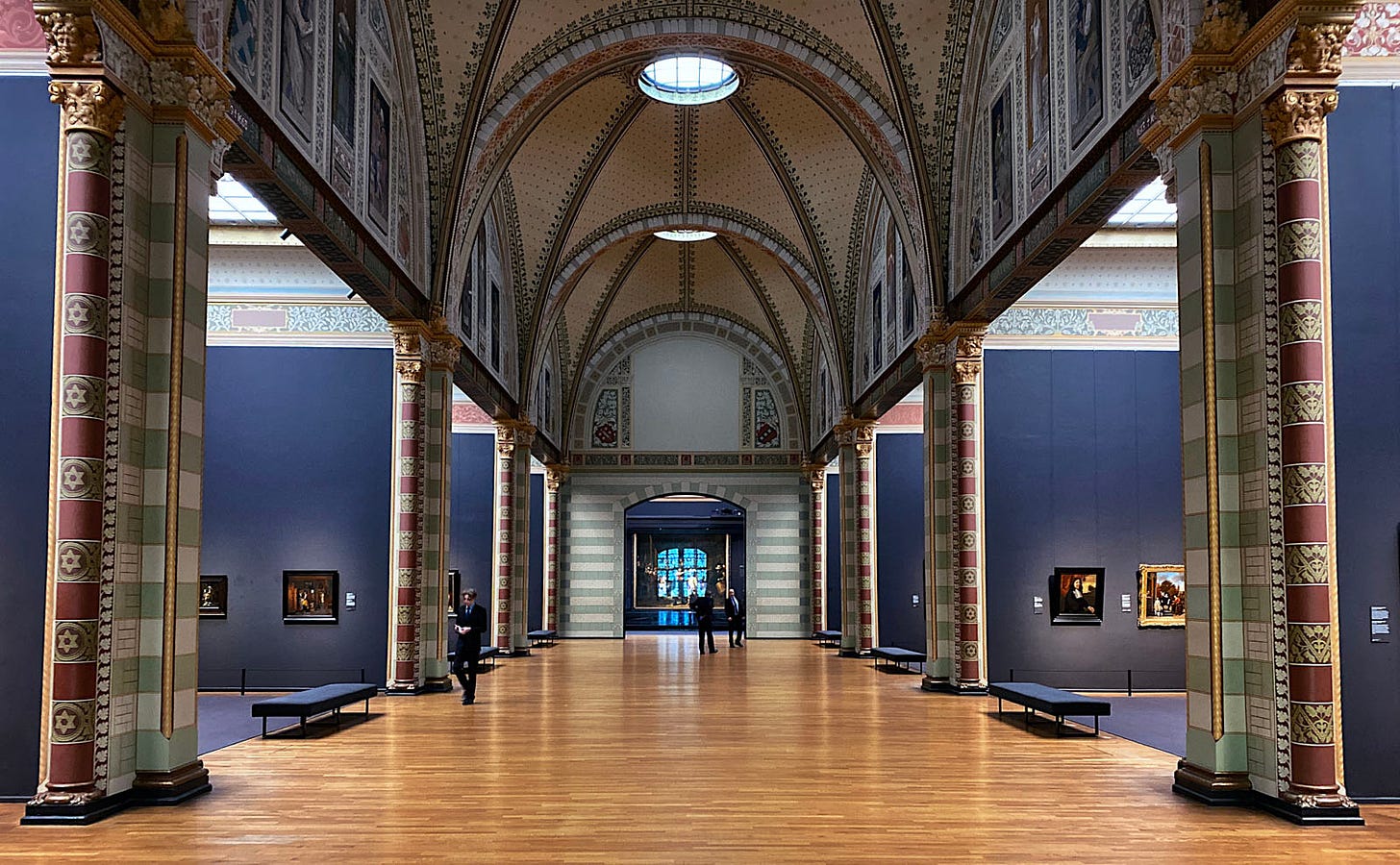
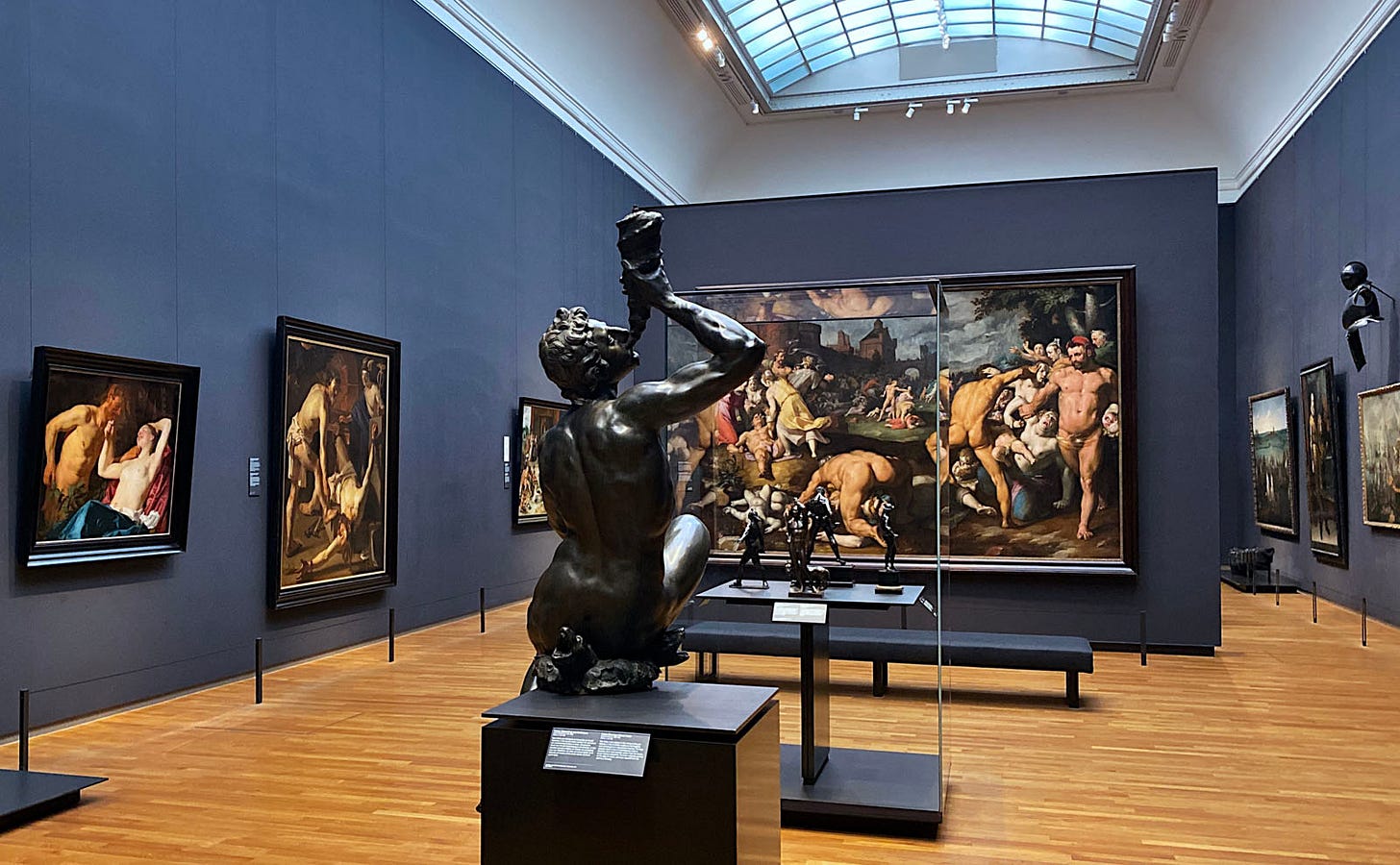

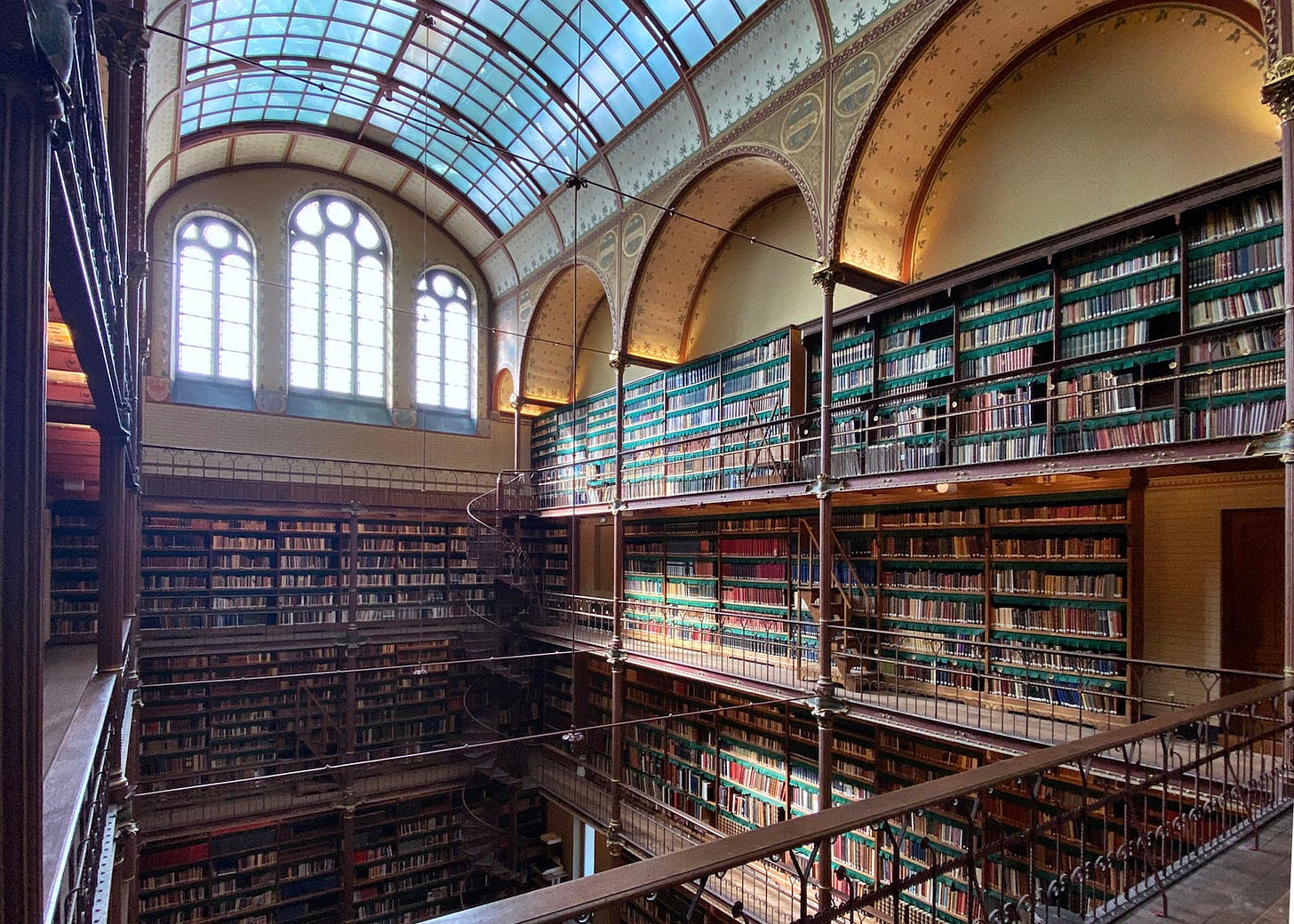
Thank you for such a brilliant introduction to this museum!
Excellent! It all looks amazing. Loved your description!